|
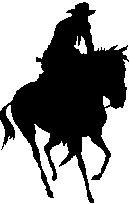
December 2008-
February 2009
BACKTRAILS
September 2008
Western Noir
Power of the Premise
West on Wheels
June 2008
Plot or Not Debate
Jack Giles
Whitney Revolver
March 2008
Walt Masterson
Plotters and Pantsers
More Horse Talk
December 2007
Peace at Any Price
Dan Claymaker
Horse Sense
September 2007
Artist Michael Thomas
Judging by Covers
The Schofield Revolver
June 2007
David Whitehead
Realistic Ballistics
Plot Twists
March 2007
Crime/western fiction
The Walker Colt
Sydney J. Bounds
December 2006
Lauran Paine
Jake Douglas & Co.
September
2006
Misfit Lil
Greg Mitchell
June
2006
Marshall Grover
Facts for Fiction
March 2006
Jeff Sadler
Mike Stotter
Writers and Money
|
BLACK
HORSE EXTRA
Battling Together at Adobe Walls Hoofprints
Before Bill Became Jessica
Work for the Gunsmith New Black Horse Westerns
Black Horse Westerns are
published by Robert Hale Ltd in attractive, pictorial library binding
that effectively dispenses with the paper wrappers, or dust jackets, that
can so quickly become damaged and worn. But a possible drawback is that
the hardcover books have no jacket flaps to carry additional copy about the
stories and their authors.
The Black Horse Extra's mission is to fill the gap -- and more! The aim
is to provide news and background information about the BHW line and the
genre.
In this edition, we feature articles that tell us as much as any
jacket flap, or even the usual publishing house website, about three of the Hale
western writers and their latest work.
The article first up gives us the fascinating history of a collaborative
project undertaken by a top German western writer, Alfred Wallon, and an English BHW veteran, David Whitehead. Their book, All Guns Blazing,
is a current new release from Hale which we are sure you will want doubly
to check out after reading what David and Alfred have to say.
Further down, you will find an article written by an author who was already producing
westerns for Hale when the BHW branding began in 1986. In fact, W.
("Bill") Spence was busy for Hale and elsewhere on the fiction scene long before
that.
Back in the 1960s, he was submitting work to Micron Publications Ltd,
among others. His name has been recorded in connection with forgotten scripts
for Cowboy Adventure Library, Western Adventure Library and other magazine-style
fiction. He has also been listed as an early scriptwriter for D. C. Thomson's
Commando series, between January 1962 and June 1976. Micron contributors
of the time included Vic J. Hanson, David Bingley (aka Frank Silvester) Sydney
J. Bounds and a teenaged Keith Chapman (aka Chap O'Keefe). All at later stages
became writers of westerns in novel form for Hale.
Bill
tells us how
the name Jessica Blair, which has now appeared on eighteen successful
historical sagas, eventually took the place of his western pen-names, Jim Bowden, Floyd
Rogers
and
Kirk Ford . . . and how these gents are starting to fight back with
large-print
reissues from Dales Westerns!
A third article, from regular Extra contributor and supporter Greg
Mitchell, gives readers and writers the indispensable facts about
conversions . . . not of the religious kind but of firearms. Modifying
older percussion revolvers to take metallic cartridges was good
business in the second half of the nineteenth century.
As always, Hoofprints leads us down the highways and byways of the western fiction scene,
drawing attention to items possibly not seen elsewhere.
Your comments and western news are always welcome at feedback@blackhorsewesterns.com
|


|
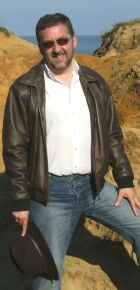
David Whitehead
|
Writing duo explain their method
BATTLING TOGETHER AT ADOBE WALLS
Cal Hennessy was on his way to meet up with old friend Billy
Dixon at Adobe Walls. The plan was to catch up on each other's news over
a beer or three. But before he got there he ran into two dead men and a bunch
of blood-hungry Comanches.
Trouble was brewing on the Staked Plains of Texas and Hennessy, who was no
stranger to it, quickly found himself right in the middle of a full-scale
Indian war.
But gun-swift though he was, would even he survive the killing to come?
Back cover
All Guns Blazing
Black
Horse Extra reported in Hoofprints last time that DAVID WHITEHEAD (aka Ben
Bridges) and German western writer ALFRED WALLON had collaborated in writing
All Guns Blazing by Doug Thorne for publication as a November
Black Horse Western. Naturally, the Extra chased up the full, behind-the
scenes-story.
David writes:
IT began, really, when I offered to tidy up a "German-English" translation of Alfred's book The Trap Was Called Adobe Walls.
The translation was pretty poor but I could see what the translator had been
trying to get at. The only problem was that by the time I had finished with
it, we had a manuscript that was about 80 pages long, and 60 pages too short.
I suggested
that Alfred write some additional material for it, but he responded by suggesting
that I do that as well, and thus we could make it a true collaboration between
us.
I knew better
than to make up the additional pages by adding great, indigestible chunks
of text, so I went back through the book and added descriptions here, dialogue
-- including some Comanche -- there, and was lucky enough to find a large
number of additional facts about the fight at Adobe Walls that really gave
me the opportunity to expand the story without the need simply to pad it.
By the time
I'd finished, I think we had a reasonably accurate re-telling of the battle.
Alfred was very pleased with my contribution. After he read the manuscript
he told me, "Before, I had a movie in my head that was in black and white.
Now, thanks to you, I have a film that is in full colour."
It was one of the nicest compliments I've ever had.
|
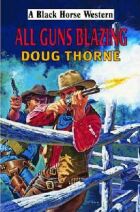
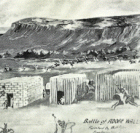
|

Alfred Wallon
|
And Alfred writes:
MY
good friend and western writer David Whitehead kindly informed me that you
are planning to make a kind of presentation for our first collaboration,
which David and I wrote under the pen-name Doug Thorne.
I would like to give you some background information to this book project.
Everything
started in 1989 when I wrote the original German text. Back then it was published
in a small collector's edition, and I was deeply influenced by John Benteen's
Sundance and Fargo series. The hero of that novel, a former scout and buffalo
hunter named Calvin Hennessy, is a man between the white man's and the red
man's world. I described him like Franco Nero in the western movie Keoma.
Why Adobe
Walls, where the story takes place? Well, I thought it would make a very
dramatic and historical background for bringing the story to life. At that
time I already had published some westerns, all of them historical.
When
I joined the Western Writers of America in 2006 as an active member, I also
discovered the Black Horse Western series. I got in contact with David Whitehead
and we corresponded numerous times. I had a short story called Cadburn´s Return, which I sent to him. He looked over it, made some remarks and offered to bring it to an audience.
|

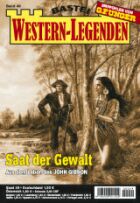
|
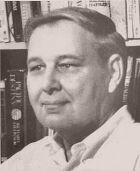
Ben Haas
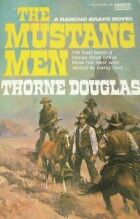
|
Eventually, the story was published in Out West magazine in the United States. It also appeared on my website and on www.ropeandwire.com. In other words it became David's and my first steps towards collaboration.
When we later
both found out that we had something in common -- a love for John Benteen
westerns -- I said, "Well, I think I have something which might be interesting
-- a western novel which you might like, because Ben Haas, who wrote as John
Benteen, would have liked that, too. . . ."
My original
German novel about the battle at Adobe Walls was translated by me somewhere
around 1995-96, just for my own pleasure. I thought that it might be useful
some day. I sent it to David and he looked it over. Of course, my English
is in some cases a "German" English, and David offered to polish it up and
add a few new chapters here and there. The result was very pleasing.
We chose the
pen-name Doug Thorne, for the following reasons: John Benteen wrote his
Rancho Bravo series under the pen-name Thorne Douglas, and the Rancho Bravo
series inspired me in 1981 to write a ranch western series called Rio Concho,
which has just been re-issued this year in paperback format.
So after I read the whole script I was more than happy about it, and David
sent it to publishers Robert Hale Ltd. It was accepted, which gave us evidence
that we did a good job. But one step leads to another, and I said to David,
"I have another translation of a western, which takes place in Alaska
during the gold rush in 1899, and the hero Clint Morgan is like Neal Fargo."
I sent Alaska Hell to David, and at the time of writing he is occupied with reading, polishing and adding a few new chapters.
And after
this? Well, John Benteen had his John Cutler series, and David and I have
already shared some thoughts employing a similar theme....
If you would like to learn more about myself and my publications, just visit my website: http://www.alfred.realxxl.de where the news section and biography are also presented in English-language versions.
Mit freundlichen Grüßen !
|

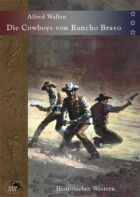
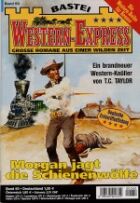
|
|
|
|
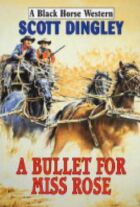
Noir in the sun.
|
Impressions of a diverting kind
HOOFPRINTS
Author Scott Dingley writes, "Many thanks for Keith Chapman's
fascinating article on noir and the western. . . . I've always felt the
two very American pulp fiction forms, hardboiled urban crime and
Frontier West, to be more closely linked than one might at first
expect. The traditional lawman's pursuit of an outlaw might have more
in common with the less morally ambiguous police procedurals of the
fifties, but we only need to look at the films
of Anthony Mann or Budd Boetticher, not to mention the later European
and
revisionist westerns, to see the darker side of the genre. And it's
entirely possible to have a noirish tale set in the sunbleached
landscapes of Texas and beyond -- the French and Italians had a nice
line in shadowy murder-under-the-sun in such films as Plein Soleil. As
Keith observes, it's the spiral down towards the bleak denouement for
our anti-hero that most clearly marks out film noir from your average
western . . . . So perhaps our beloved publications' closest crime
cousin is the private detective
story -- a lone wolf in search of justice or redemption, or both. I'll
be seeking out the work of Lewis Patten
thanks to Keith. The investigations of Marlowe, Hammer, Spade, Archer
et
al were certainly in my mind when I wrote my first BHW, A Bullet for
Miss
Rose, and if my long-gestating second is accepted, it promises a touch
more
noir for anyone seeking a little shade from the blazing western
sun."

|
|
|
Paddy Gallagher, aka Greg Mitchell, is another who enjoyed fellow BHE
contributor Chap O'Keefe's dissertation. "I managed to pick up a couple
of Lewis B. Patten's books at the local library. I
liked them very much as they had a sense of realism that is lacking in
the
'cookie cutter' stories we see so often. Patten knew what he was
talking
about and got his message across without the welter of often fake or
erroneous
technical details that certain writers used to bluff the reader. If his
westerns are a little on the dark side that is understandable. Sudden,
violent
death is a pretty serious matter and the fictional heroes who kill
twenty
or thirty people in each book and then walk away whistling happily are
far
from realistic. I thought I had read some of Patten's books a long time
ago because I
was familiar with the name. But if I did, they did not have the impact
of
the two I have just finished. When a person produces a lot of work some
books are bound to be better than others."
|

Better reading.
|
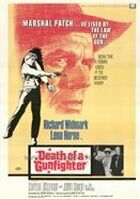
Hollywood's pick, too.
|
And again. . . ! David Whitehead writes, "I want you to know that
your thought-provoking
lead article on noir westerns and Lewis B. Patten has prompted me to go
back
and start reading Patten all over again, beginning with my own personal
favourite, Death of a Gunfighter [BHW reissue, 1995]. His West
really was a bleak place, but
very, very believable, and the moral questions his stories raise are
always
intriguing." An IMDb search reveals David's pick of the Patten novels
attracted the interest of
the movie-makers and
was filmed in 1969 with Richard Widmark and Lena Horne in lead roles.
David continues, "The September BH Extra was, as always, an absolute
treasure-trove of information and a joy to read. This may sound rather
trite, but I really do look forward more and more to each new issue."
|
|
|
Broadening the debate, Nik Morton, aka Ross Morton, says, "Your noir
piece was very
interesting and raised a lot of good questions, though there are
probably no answers. Yes, it's sad that over-the-top 21st century
sensibilities
dictate what can and
can't go into a western destined for libraries. Other genres don't have
to
suffer this kind of censorship. For my third BHW I was warned about
violence
to women so toned down a cold-blooded shooting. It still is horrific,
that
is if it survives to the proof stage! Paddy's Extra item on teams was
very helpful, too -- I'll certainly be putting it in my research
folder. Indeed, my next BHW might be about a wagon train. . . .But
first, I have a romantic thriller to write, set in Tenerife." Nik also
tells Hoofprints about his latest books. "Besides Pain Wears No Mask,
which has a few good reviews on Amazon.co.uk and .com, Hale have
accepted my third western, The 300 Dollar Man, and The Prague
Manuscript has just been published -- the first in a spy thriller
series about a psychic spy. That's got a good review on Amazon.co.uk
too, which I'm pleased about."
|

Eye spy . . .
|
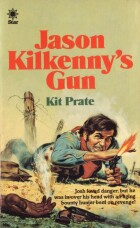
Unlikely to survive.
|
Should westerns written for library circulation have different, more
restricted content than the westerns intended as retail paperbacks? The
debate continues. . . . Meanwhile, a BHW announced for January, Jason
Kilkenny's Gun by Kit Prate, previously appeared as a Star Book (W.H.
Allen, UK) and
Tower (US) paperback in 1981. It was largely a coming of age, rite of
passage story in which nasty old gunfighter Rance Savage influences the
life
of Josh Kincaid, introducing the boy to liquor and -- most
significantly -- women. In Chapter 4 Savage provides Josh with his
first girl: "Savage tapped the hardness at the front of the boy's
trousers. 'It isn't any great sin, boy, emptying it in her. You'll go
to hell just as quick throwing it away behind the barn.'" After seven
pages of frank description, Savage in Chapter 5 gives Josh the coin to
buy an older whore. . ."Now he wants to screw them all." With less
explicit
scenes being toned down in original BHWs, Hoofprints wonders how much
of Prate's book is going to be censored to preserve the innocence of
the
library line's readers!

|
|
|
"You can count on one hand — or maybe half a hand — the number of
westerns that were box-office successes in the recent past," actor
director Ed Harris told Entertainment Weekly. The paper reported, "In
2005, when
Harris arrived at the Toronto Film Festival to promote A History of
Violence with his co-star Viggo Mortensen, he brought
a book along with him. Harris wanted Mortensen to read Appaloosa,
the 2005 western novel by crime writer Robert B. Parker that he was
hoping
to turn into a movie. In addition to co-writing and directing the
project,
Harris thought he'd play Virgil Cole, the laconic lawman who sets about
cleaning up the titular 1880s town, and he wanted Mortensen to play Everett,
Cole's even more laconic sidekick. 'It's a totally awkward proposition,
handing another actor a book like that,' Harris says. 'But
I enjoyed working with Viggo in A History of Violence, and I
thought
he'd respond to the material.' Mortensen did. Like Harris, he was drawn
to the quiet, layered friendship between the two cowboys — which is
tested by Renée Zellweger as the woman who
tries to woo them both. . . . The result is a decidedly old-fashioned
oater — Harris shunned a revisionist approach. 'I love the original 3:10
to Yuma, My Darling Clementine, and The Man Who Shot
Liberty Valance,' says Harris. 'This movie is definitely in the
classic mode.' ''

|

Film of the book.
|

Code of the West.
|
When reader Jack Maybrick reviewed the descriptively titled pulps
anthology The Big Book
of Western Action Stories at Amazon.com, he made the observation: "The
one common thread that seems to weave relentlessly through all of these stories is the
omniscient
presence of the 'Code' of the West. The Code is more easily
transmitted
to the reader through these stories than summarized by any third
person,
but roughly speaking, it's a series of directives which mandate that
promises
be kept, that alliances be honored, that grudges be avenged, that
individuals communicate plainly (because the difference between friend
and foe might
depend on the manner in which the other's words or gestures are taken),
that
obligations be paid, that rights be boldly asserted or forever lost to
those
who are bolder, that justice be done, that law be taken into one's own
hands
when necessary to do justice, that crises of the environment or of the
spirit
be faced head-on, and that (unless otherwise asked) one not pry into
the
business of another. On occasion, there is confusion over exactly what
course of action the Code requires, such as in the first story of the
volume [The Code by Ernest Haycox] where the protagonist
must choose between warning a benefactor about a threat to his life and
honouring
the mandate that one mind his own business. But most of the time, the
'right
thing to do' is fairly clear to the reader."

|
|
|
New western blogs pop up with astonishing frequency. Sometimes they
do their dash and disappear; sometimes they stay, adding themselves to
our "must check" list and tempting us away from book reading.
Here are three we hope will survive. Western Fiction Review is run by
the Frontier Times Yahoo group owner Steve M, who frequently chooses
old
BHWs for attention. The content is conventional reviews of books in
Steve's vast collection, plus follow-up comments from his visitors.
Broken Trails is from Ray Foster, aka Jack Giles, and covers a range of
topics, including westerns (of course!), music and the motorbike
scene. The
Tainted Archive comes from actor and writer Gary Dobbs and is devoted to a range of pop culture,
including books. Gary has told the story of a much-admired coalminer grandfather, Jack Martin, whose name he has adopted as a byline for his westerns. All three, being blogs, offer interesting personal
slants on their subject matter. Hoofprints cannot pick a favourite!
|

New voice Gary Dobbs.
|

Best western artists.
|
Editor Steve Holland tells us how he chose picture stories for the new
High Noon
collection (Prion Books) from Fleetway's long-gone Cowboy Picture
Library. "I always preferred the later issues of Cowboy to the early
ones; the artwork is far slicker in issues that appeared in the late
1950s and early 1960s — Cowboy folded in September 1962 — compared to
when it started in 1950, thanks mostly to the arrival of
European artists in the mid-1950s. Jesus Blasco was the most
consistently brilliant artist seen in the black-and-white British
weeklies. He worked in a more photorealist style than many of his
contemporaries and I didn’t want people thinking this was a cartoon
collection. Gerry Embleton was my second choice, for the simple reason
I don’t think there was a better British artist working on the later
issues of Cowboy. Gerry was the younger brother of the late Ron
Embleton whose work is hugely admired by collectors. For my third, I
picked Alberto Breccia, an Argentinian highly regarded in South America
and Europe for strips like Mort Cinder and Perramus. Just before he
drew Mort Cinder, he was drawing these virtually unknown cowboy comics
for the British market with all the vigour and style he put into his
later work, and they’re just fantastic!" Eleven of Steve's thirteen
picks
are drawn by Blasco, Embleton or Breccia.
|
|
|
David Whitehead has been busy writing horror and romance stories under
his own name and Janet Whitehead. At his Ben Bridges website, he tells
us The Fluttering is in the vein of James Herbert and Guy N. Smith,
while The Dead Are Awake! attempts to recreate the feel of the classic
Hammer movies. The horror and romance books are available in limited
editions through the Lulu distribution system. Meanwhile, large-print
publishers F. A. Thorpe have just bought rights in "Janet's" Hold
Me Forever and Yesterday's Child for wider
circulation to the public lending libraries in the Linford Romance
series. Janet is being billed as "The New First Lady of Romance". No
wonder with this greener graze available it has been a while since we
had new
yarns from BHW authors Ben Bridges, Glenn Lockwood or Matt Logan!
|

Bearded "First Lady".
|

Action man.
|
Also missing from the BHW list, and in action, is Mike Linaker, aka
Neil
Hunter and John C. Danner. In a recent, detailed profile at the Ben
Bridges site, Mike explained his continuing work on Mack Bolan
adventures for Gold Eagle and the origins of his interest in westerns.
Sadly, he concludes, "At the moment, here in the UK, there is very
little in the way of genre
fiction. Now it all has to be high-profile, guaranteed bestsellers by a
restricted group of names you see over and over again. I find that a
little stifling. Publishers seem to be drawing in their horns.
There are no smaller houses willing to go to the edge. That's why I
stay with my Canadian/US publisher, Gold Eagle. In the US, there are
still markets for genre fiction. Some might call it downmarket.
But so what? It has its place. Sometimes all a reader wants is simply
to be entertained. He or she wants to enjoy a good read without too
much deep thought being thrown at them. And that's what I try to give
them."
|
|
|
Paul Kupperberg posted at Bookgasm on the topic of authors who have
transformed themselves from comic book scriptwriters to novelists. It was seen as a
fairly modern phenomenon. "Books with no pictures in them? What would
comic
book writers know about those? More than you might think, at
least in
the last quarter century or so," Paul said. Here is a quick
Hoofprints roundup of some of the BHW authors who have also worked for
comics.
A few were writing westerns and/or comics as far back as back as the
early1960s! Sydney J. Bounds, David Bingley (aka Frank Silvester),
Vic J. Hanson, Keith Chapman (aka Chap O'Keefe), David M. Heptonstall (aka Mike Stall)
and David Whitehead (aka Ben Bridges and Glenn Lockwood).
It's believed Australian-based BHW writer Paul Wheelahan (aka Dempsey
Clay and Ryan
Bodie) is in a class of his own: he had an earlier career as a comic
book artist, drawing The Panther. The cover image here is by Spider-Man
co-creator Steve Ditko, illustrating Keith's Strange Possessions, which
appeared in No. 62 of The Many Ghosts of Doctor Graves (Charlton
Comics).

|

Transformations.
|
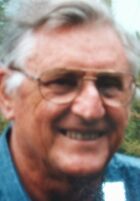
It's not me!
|
Writer Keith Hetherington is considering replacing one of his four
BHW pen-names. Seems Clayton Nash is the name of the accused in a
particularly unpleasant criminal case in his native Australia and
vigilantes might be on the loose! "It's all too easy these days for
anyone to find out an author's real name and address, and there are so
many 'wrong' home invasions I feel a bit bothered about still using the
nom-de-plume." Meanwhile, Keith's next BHW release is Wildcats, safely
under his Tyler Hatch name. Publisher John Hale had an initial, small
reservation about the appearance in the novel of an identical twin --
"seldom successful" -- but concluded, "The story reads very well and is
written in your usual professional manner." Keith tells us the twin was
inspired by his wife Rita's bond with her twin brother Ken. More in our next edition. . . .
|
|
|
Libraries everywhere remain a great source of western reading. From
the Montgomery City-County Public Library, Alabama, we quote, "Westerns
are some of our most popular books. The classic genre has timeless
appeal and continues to provide excellent fiction. Often the western
theme crosses lines of genre into romance and the very finest of
general fiction. Many patrons are delighted to find that we have
westerns in many areas of our branches. Each
branch has a section devoted to westerns. Occasionally a patron will
come into the Governor’s Square branch looking dejected because he has
read them all and he can’t find anything new. But check with your
librarian, or check the New Books and Large Print sections. Western
readers are delighted to find out that we have new ones arriving every
week, in both Large Print and Regular Print. So if you are feeling down
because you think you’ve read them all, first check the New Books section.
Just today we are checking in new Large Print Western titles . . . ."
The message from Alabama could probably be repeated by your nearest
public library. Why not go along and see? And why not mention this website to your librarian as a source of purchasing
suggestions?
|

Place to go.
|
|
|
|


|
Revisiting the Jim Bowden years . . .
BEFORE BILL BECAME JESSICA
Determined to
keep
his past a secret from his wife and family, Frank Peters is forced to
leave
his beloved Hash Knife when the past catches up with him, before his
men
return from a cattle drive.
He seeks the answer to a new life through the events of twenty
years
ago, but an old partner stalks the same trail for the dollars Frank
seeks.
With suspicions aroused when they return from the cattle drive,
Johnny
Hines and Cap Millett ride the trail to the Dollars of Death,
uncovering
some strange happenings, as they attempt to save Frank from his past
and
preserve his future.
Back cover
Dollars of Death
BILL SPENCE writes:
SO reads the blurb of my latest novel to appear in large-print,
published
as a Dales Western by Magna Books in September. Dollars of Death,
by Jim Bowden, was first published by Hale in 1979. It was one of 36
westerns
of mine that they published between 1960 and 1993. Roughly one a year.
My first novel was a war story, Dark Hell, published
as a Digit Books paperback in May 1959 with the byline Duncan Spence,
my full name being William John Duncan Spence. I then turned
to
writing westerns under the names of Jim Bowden, Floyd Rogers and Kirk
Ford.
Towards the end of 2007, I sold the large-print rights in eight of
the westerns,
although some were written nearly fifty years ago. A novel never
dies!
Incident at Elk River, also first published by Hale in
1979,
appeared in its Dales edition in August. Montana Justice
comes
out again in November and Trail to Texas in December.
Four
more Dales large-prints will follow in 2009. A complete list of the
titles
and original publication dates for my westerns (and other books) can
be
found at my website, http://jessicablair.co.uk
The books by Jim Bowden often featured as a central character Dan
McCoy or Cap Millett.
My output of westerns could have been greater, but I was writing
other
things at the same time: two more war novels, a romance, three non-fiction
books about Yorkshire, and Harpooned – A History of Whaling.
|


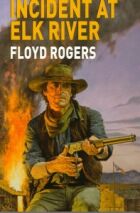
|
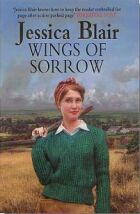
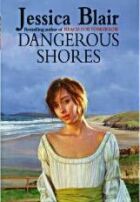
|
The whaling book was instrumental in the creation of Jessica
Blair.
Since then I have written 18 historical sagas under that name and am
writing
the nineteenth at present. The pen-name came about when my publisher,
Piatkus,
accepted the first historical saga and declared that, for various
reasons,
they would prefer to publish it under a female name. Jessica Blair was
their
suggestion.
The rugged Yorkshire coast and its ports of the nineteenth century
have
formed the backdrop to most of these novels of romance, mystery and
adventure. In the books' journeys into the past, you can follow the
whalers,
the jet carvers, the smugglers, the alum workers, the artists, the
photographers
and the herring fishers; face dangers with the wreckers in Cornwall;
fly
with the fighter pilots and bomber crews of the Second World War; sail
with
the minesweepers, experience Dunkirk and watch the work of the Women’s
Land
Army.
This year, Wings of Sorrow was published in hardback
and Dangerous Shores in paperback.
But I always say I learned my initial writing trade on the back of
westerns.
They were where I learned to tell a story and create characters.
In my early writing days there were no computers; no internet. We
had
no easy way to communicate with fans, no speed of response, etc. Now,
with
websites, you can learn much more about who writes your westerns.
And what a boon the Net must be when researching background
material
for westerns! I built up a substantial library instead – you still
can’t
beat a book.
But readers can get to my blog through my website and I’m always
pleased
to hear from anyone who loves westerns – or anyone who loves reading
and,
of course, writing.

|

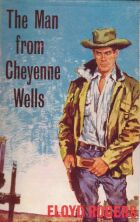
|
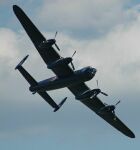

|
I was born in Middlesbrough, England, in 1923. I trained as a
teacher
but never followed this profession because the Second World War
intervened.
I served in the Royal Air Force as a bomb-aimer, doing 36 operational
flights
in the Lancasters of 44 (Rhodesia) Squadron Bomber Command.
At my blog recently I joined the fashion for lists and gave one of ten books about
Bomber Command that I thought should be read. The books, and more like them, make you realize what these men
(many of them still boys) contributed. If their
campaign had not been carried out successfully, many more people would
have died before the final victory. Their losses were high but
they never flinched from their duty. The books lead you to wonder why Bomber Command was never awarded a Campaign Medal.
Many other branches of the Armed Services were awarded medals
– and are still, rightly so, for participation in today’s conflicts. It's fitting that recognition is given to those who
risk their lives or pay the ultimate sacrifice for their country. So,
why no recognition for those of Bomber Command who served their country
in the Second World War?
Their role has been maligned by people who were
not there, who cannot appreciate or recognize the vital role played by
Bomber Command, along with the other services, in ridding
the world of an evil regime. The oversight must be laid to a
large extent at Winston Churchill’s door. He tried to distance himself from a
campaign he had wholeheartedly approved in order to defeat Adolf Hitler and
all he stood for.
|


|
|
After the
war
I was sent to Rhodesia by the RAF. It was on the voyage to Durban that I wrote my first short story and
was bitten by the writing bug. On return to England, I wrote articles
for newspapers and magazines and fulfilled my desire to write a novel
by using some wartime
experiences as background.
Along with my wife, Joan, I wrote three books dealing with aspects
of
Yorkshire. I also started a review column in the Yorkshire Gazette and
Herald,
and that has now been running more than 40 years.
Visits to Whitby, on the Yorkshire coast, sparked off an interest in
whaling.
Ten years' intermittent research into the subject resulted in the
publication of the mentioned illustrated history, Harpooned.
Writing was a part-time occupation until 1977 when, with the full
support of my wife, it became full-time. Throughout my whole writing
career I have
had her, and my four children’s, unstinting support, advice and
inspiration.
I moved into the computing age very early on when I purchased a word
processor which had everyone amazed at the ability to manoeuvre words,
sentences, paragraphs and whole pages at will. Since then I have
updated the equipment twice,
to keep abreast of the wider facilities computers offer authors. The
equipment
came with me when I moved to a family home in the village of Ampleforth
on
the death of my wife in 1999.
Though much of my writing life revolves around the computer, I
realize it is essential for a writer to keep personal contact with
people. As part of this I attend the meetings of the northern branch of
the Romantic Novelists’ Association near Harrogate once a month. We
catch up on what we are all doing, exchange ideas, meet new authors,
and share the exchanges over a
pleasant meal.
I am also a member of the Society of Authors, the Bomber Command Association, the Aircrew Association,
the
National Geographic Society and the Scarborough Writers' Circle.
Westerns?
Great stuff! Wonderful escape material. Curl up in a chair
with a good western . . . let the troubles of the world fade away in
the
pounding hoofbeats of the posse pursuing our innocent hero. . . .
|
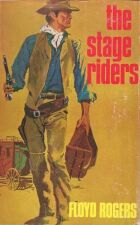
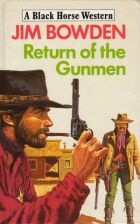
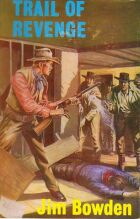
|
|
|
|
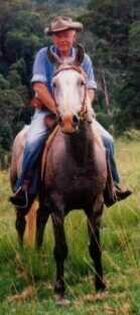
|
Greg Mitchell returns to the West's firearms
WORK FOR THE GUNSMITH
The revolver he
picked up had been modified to take metallic cartridges
and would be an asset to the defenders' armoury. Frontier gunsmiths had
modified
many earlier-model revolvers to take the .44 rim-fire round used in
Winchester
and Henry rifles. Metallic cartridges could be centre-fire or rim-fire
making
it necessary to select the ammunition for which the weapon had been
altered.
Malone's own Colt was a centre-fire but a quick feel of the [fallen
outlaw's]
cartridges showed them to be rim-fires.
From
Outlaw Vengeance
THERE was a time in the Old West when conversions were not the sole
domain
of hot gospellers and dedicated sinners could have one or two
conversions
without affecting their criminal status. But the conversions concerned
were
not religious experiences, although no doubt some were life-changing.
These
conversions were a means of modernizing revolvers made obsolescent by
advances
in technology.
Revolvers in the mid-19th century were mostly percussion weapons where
the
chambers had to be loaded from the front of the cylinder with loose
powder
and bullets, or with paper cartridges. Then percussion caps were added
to
the nipples at the rear of the cylinder. When the hammer struck the
cap, it
exploded sending a jet of fire into the chamber and setting off the
cartridge. . . .
That was the theory but much could, and did, go wrong. Caps misfired,
parts
of fired caps fell into the mechanism and jammed the weapon, the
cartridges
were susceptible to dampness and sometimes all chambers exploded at
once.
Then the metallic cartridge was developed in Europe. Cap, charge and
bullet
were all combined. Reliability was enhanced and the problem of gas
leakage
in breech loading weapons was solved. The Europeans had little respect
for
American patents and were quickly producing their own versions of the
revolver
originally invented by Samuel Colt. Many of these were rim-fires and
pin-fires
and incorporated a bored-through cylinder so that cartridges could be
loaded
from the rear.
The bored-through cylinder was patented in United States by Rollin
White. The inventor
first tried to sell his patent to Colt but in one of the great
misjudgements
of his career, the revolver's inventor saw no need for such an
innovation
and rejected it.
Another company, Smith & Wesson, bought the patent and in 1857
began
producing rim-fire revolvers in .22 short calibre using metallic
cartridges.
Later they made a .32 version of the same revolver and it has been said
that
a few of these unofficially saw action during the Civil War
(1861-1865).
However, these weapons left much to be desired as man-stoppers.
The Confederates imported a few European pin-fires but percussion arms
in
calibres of .36 and .44 did most of the serious revolver work.
After the war the Colt factory brought out a metallic cartridge system
named
the Thuer, after its inventor. The backward-tapering cartridge loaded
from
the front of the cylinder to avoid contravening the Rollin White
patent.
The system worked but was not a great success.
When submitted for British Army tests in 1869, the Colt revolver was
found
wanting. The English Adams .450 centre-fire revolver with a
bored-through
cylinder proved superior in accuracy, penetration and speed of loading.
That year Smith & Wesson introduced their .44 American revolver and
the
big companies like Colt and Remington were left behind. But not for
long.
It was found that many percussion revolvers could be modified to take
metallic
cartridges by boring through the cylinder and fitting a loading gate to
the
right side of the recoil shield. Hammer noses were altered to hit the
rim
or the centre of the cartridge, depending upon the type selected. Some
revolvers
were fitted with an ejector rod on the right side of the barrel but
others
were less sophisticated.
The alterations were fairly simple and it was
said
that many were done by blacksmiths. The Colt company would make the
necessary
modifications for the sum of $5 and it is possible that conversion kits
were
also available. Factory conversions were based on a system devised by
Mason
and Richards, two Colt engineers.
The Army .44 was modified to take a centre-fire .44 cartridge or a
rim-fire
version that was interchangeable with Henry rifle and 1866 Winchester
round.
The .36 Navy became a .38 calibre in either centre-fire or rim-fire
versions. Hard-hitting Army .44s and the smaller Navy .36s were often converted
and
had the barrels cut down to make very effective hideout guns.
|
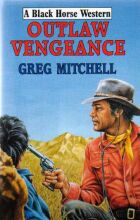
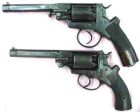
Percussion revolvers

Rollin White patent
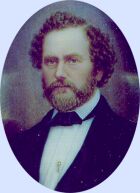
Samuel Colt
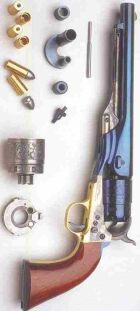
Thuer conversion 1868

Colt Army .44
|
|
[Missouri Sam,
a shadowy assassin is planning a murder.] He attached a
holster to his belt. It contained a Navy Colt that had been shortened
and
converted to take .38 centre-fire cartridges.
From
Red Rock Crossing
|
|
|
The smaller .31 pocket revolvers were often changed to take .32
metallic
cartridges in rim-fire or centre-fire style. With smaller, five-shot
cylinders,
they had comparable ballistics to the .41 rim-fire Derringer, were
more
accurate and had three extra shots.
Remington, Starr and Whitney revolvers could likewise be converted.
Though
most conversions were American arms, a few converted English Adams,
Tranter
and Webley percussion weapons have shown up in private collections.
The rim-fire cartridge was far more reliable than percussion types and
ignition
was made by the hammer striking the thin copper shell and setting off
the
priming compound. This was spread around the interior base of the rim
but
occasional misfires happened when the priming compound was not properly
distributed. Once fired, rim-fire shells could not be reloaded.
The centre-fire cartridge had a stronger brass case because the priming
was
a copper percussion cap in the centre of the base. It could fire
stronger
loads and misfires were comparatively rare. The empty centre-fire shells
could be reloaded several times.
Pin-fire cartridges had a pin set at right angles to the shell and the
bullet
was fired when the hammer drove the pin into an interior cap. Though
popular
in Europe, pin-fires never took on in England or the United States.
They were also less
reliable than rim-fires and were not a serious option for conversion.
The Rollin White patent had expired and Colt in 1871 produced an
open-top
.44 made of mostly percussion parts. The .44 Colt cartridge had
similar
ballistics to the Smith & Wesson .44 American. There were many
variations
of converted Colts. Some had long barrels and some short. A few had
rear
sights added to the top of the recoil shields. Except for one model of
the
obsolete Dragoon .44, the open-top Colts used a notch in the hammer for
a
rear sight and some shooters disliked this.
The Remington revolver had a solid frame with a rear sight milled into
the
top strap and many shooters preferred this weapon to the Colt. It
loaned
itself to conversion equally as well though it was 1875 before
Remington
brought out their own metallic cartridge big-bore revolvers..
The military tried out a few of the Colt open-top .44s but relied
mainly
on percussion revolvers until the famous Colt Army .45 was introduced
in
1873. In 1873, 10,676 cartridges for .44 conversions were held by B
Company
of the 7th Cavalry at Fort Lincoln. This would indicate that a fair
number
of these weapons were in circulation In 1874, D Company of the 7th
Cavalry
showed two .44 converted Colts on their ordinance return for the
September
quarter..
A few of Custer's Indian scouts were photographed with converted Colts,
probably at some time before his Black Hills expedition of 1874 . I can
also
recall seeing a picture of Indian reservation police with converted
Colts
that would have been taken some years later. These might have been army
surplus
weapons. Some conversions saw action with the Texas Rangers, but
civilians
used most of the converted revolvers.
One .38 centre-fire, Navy conversion was carried by Doc Holliday at
the
famous Battle of the OK Corral in 1881. It was a factory conversion, a
handsome
weapon, nickel plated with ivory grips.
Ned Christie the Cherokee outlaw sported a pair of Colts converted to
.44/40
to match his 1873 Winchester. He was a blacksmith by trade and was
reputed
to have done the conversions himself.
The gunfighter Dallas Stoudenmire relied mainly on an ivory-handled
pair
of .44 Smith & Wesson Americans, but carried a cut-down .44 Colt
conversion
as a hideout gun in a special leather-lined pocket. This weapon had no
ejector
rod and fired shells would have been pushed out later, probably with a
pencil
or a stick. While an unfired cartridge would drop out readily, fired
shells
sometimes stuck to the chamber walls and often had to be prodded loose.
Approximately 50,000 Colts were converted in the years between 1869 and
1873. Many of these were in .44 rim-fire and were sold to Mexico and
South
America where that cartridge was still widely used.
The conversion revolver was a stop-gap measure but proved to be an
effective
addition to many a westerner's arsenal.
|
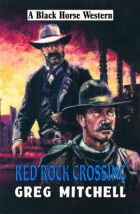

Remington 1875
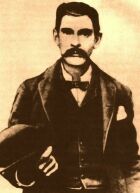
Doc Holliday
|
|
|
|

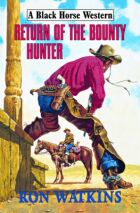

|
NEW
BLACK HORSE
WESTERN NOVELS
Published by Robert Hale Ltd, London
978
Desperate Men
|
Corba Sunman
|
0 7090 8634 5
|
Livin' Ain't Forever
|
Ryan Bodie
|
0
7090 8666 6
|
Viva the Brazos Kid
|
Frank Longfellow
|
0
7090 8665 9
|
Shadow Man
|
Andrew McBride
|
0
7090 8663 5
|
All Guns Blazing
|
Doug Thorne
|
0
7090 8661 1
|
Return of the Bounty Hunter
|
Ron Watkins
|
0
7090 8668 0
|
Divided Loyalties
|
Ethan Flagg
|
0
7090 8671 0
|
Lightning Draw
|
Hank Fisher
|
0
7090 8672 7
|
The Avengers of San Pedro
|
Edwin Derek
|
0
7090 8675 8
|
Paths of Death
|
P. McCormac
|
0
7090 8676 5
|
The Gallows Gang
|
I. J. Parnham
|
0
7090 8677 2
|
Just Breathin' Hate
|
Dempsey Clay
|
0
7090 8680 2 |
Jason Kilkenny's Gun
|
Kit Prate
|
0
7090 8678 9
|
Rawhide Rider
|
Dale Mike Rodgers
|
0
7090 8682 6
|
Wildcats
|
Tyler Hatch
|
0
7090 8693 2
|
The Gun Hand
|
Robert Anderson
|
0
7090 8694 9
|
Dakota Death
|
Billy Hall
|
0
7090 8695 6
|
Coyote Deadly
|
Lance Howard
|
0
7090 8696 3
|
|
|
|
|
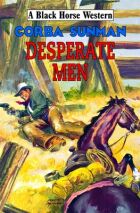
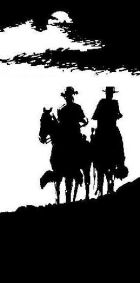
|

|
Black
Horse Westerns can be requested at public libraries, ordered at bookstores,
and bought online through the publisher's website, www.halebooks.com, or retailers including Amazon, Blackwells,
WH Smith and VinersUK Books.
Trade inquiries
to: Combined Book Services,
Units I/K, Paddock Wood Distribution
Centre,
Paddock Wood, Tonbridge, Kent TN12 6UU.
Tel: (+44) 01892 837 171 Fax: (+44)
01892 837 272
Email: orders@combook.co.uk
For Australian Trade Sales, contact DLS Distribution Services, tradesales@dlsbooks.com
For Australian & New Zealand Library Sales, contact DLS Library Services, swalters@dlsbooks.com
DLS Australia Pty Ltd, 12 Phoenix Court, Braeside, 3195, Australia.
Ph: (+61) 3 9587 5044 Fax: (+61) 3 9587 5088
|
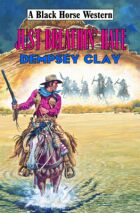
|
|
|
|
|